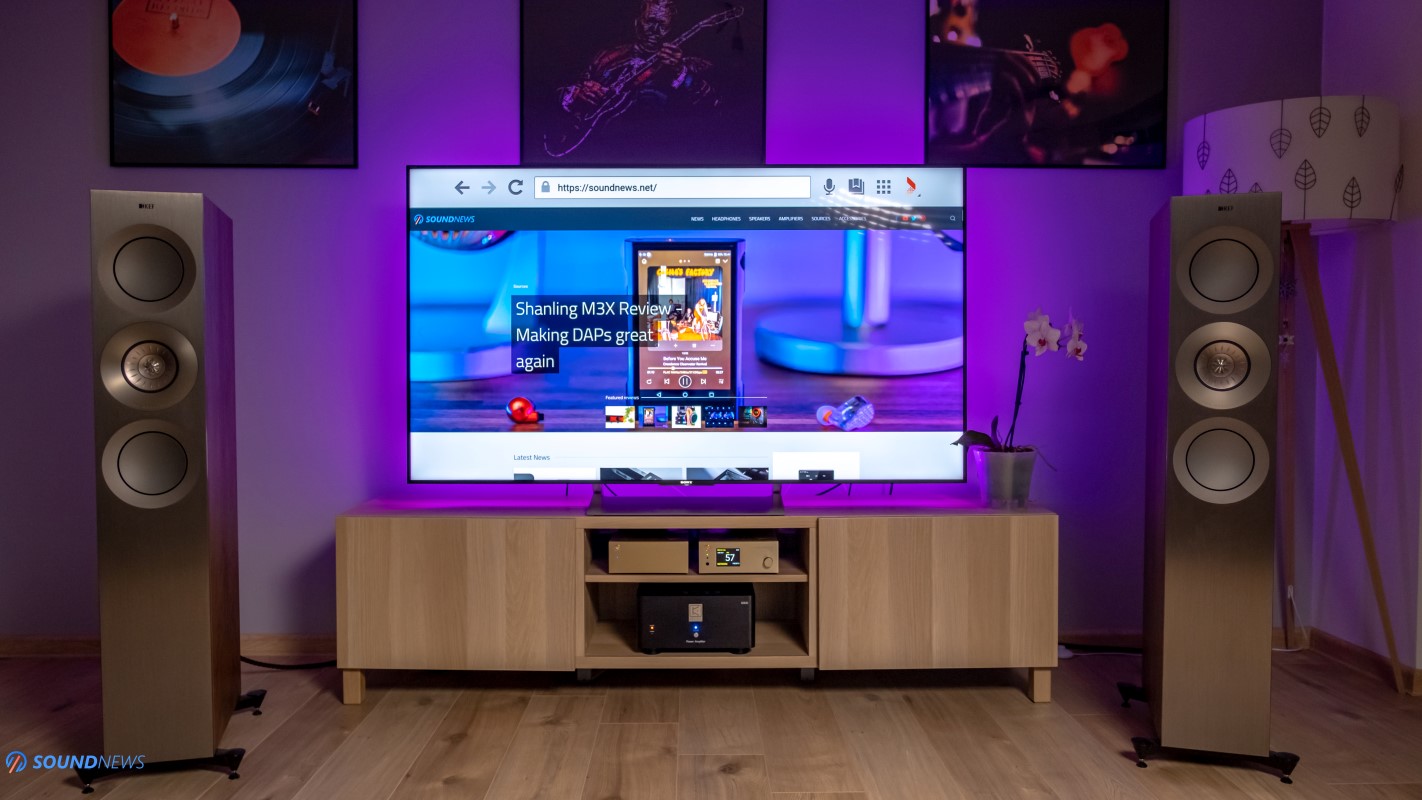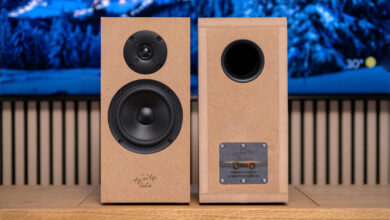KEF Reference 3 Review – Magic Making Machines

My Video Review:
The best reviews that I’ve wrote, always started with a good story. This time around I’ll be closer and more personal, telling you about my loudspeaker adventures. Before my son was born some 8 years ago, I was very much into loudspeakers, trying a bunch of them, always visiting audiophile gatherings and conventions, always trying to learn a few things and applying them in my stereo setup. As he started walking on his own, a new universe of discovery opened for him and a world of trouble for me. Besides all thing’s audio, I’m a tinkerer of all sorts, collecting screwdriver kits, soldering irons, knives, flashlights and many other things. Since I am always taking a peek inside solid-state equipment before publishing a review, trying to understand what makes them tick, I somehow forgot a screwdriver near my stereo setup and a TV. I was on a paternity leave, preparing a bottle of milk in the kitchen and when I’ve returned back to the living room: my son was poking the tweeters of my loudspeakers with my screwdriver and as an added bonus, he completely destroyed our first smart TV…Tweeters have been repaired, TV set has been replaced and a month later, I’ve become a headphone enthusiast of the highest rank.
As you well know, it’s much easier hiding brand-new headphones from the eyes of our bellowed and from paws of our little ninjas and in no time, I became a happy Sennheiser HD800, Beyerdynamic T1 and Audeze LCD-2 head-banger. Even at that time, I knew that I will be returning back to my stereo setup…but not yet. Not yet! Fast forward a few years, I started auditioning a bunch of loudspeakers up to $500 and then up to $1000, but as months passed by, it was clear to me that neither of them were singing music the way I like it and after an extensive KEF LS50 VS LS50 Wireless showdown, I’ve picked a glossy white LS50 Wireless and never looked back. I’ve added a subwoofer later on and life started to get back on track. In the meantime, I’ve exchanged them with a pair of Buchardt S400 and started building a proper Hi-Fi setup around them, consisting of a DAC, Preamp and power amplifier, always remembering the good old times when I was rocking out on proper stand-floor loudspeakers. Before getting the LS50, I’ve auditioned a few standfloors from the local distributor and from several speaker makers, auditioning plenty of top-end models in a span of two days, I remained impressed the most by the KEF Blade 2 and by the Reference 1 bookshelves, making a promise to myself that a day would come when a pair of Reference 1 would sit in our living room.
Last year when everybody was cursing 2020 as the worst year of their lives…I felt blessed with one of the best years, as finally my dream would come true and I’ll return back to my roots. Christmas was approaching at a fast pace and I decided paying them a visit once again, refreshing my memory and listening to the Reference 1 for one last time, before killing my wallet for good. All was good and dandy, I was toe-tapping, I was air guitaring and I was smiling like a kid in a candy store and I was ready to go home with a beautiful pair of Reference 1 finished in walnut wood, until the store owner casually asked me trying their medium-sized Reference 3 standfloors for a few minutes. I thought to myself: why not, what could possibly go wrong…right? Lo and behold! Soundstage doubled in size, bass notes went to subterranean levels, transients were going like crazy, slamming my body like Tyson Fury unleashed his wrath upon Deontay Wilder. Half of my brain was dancing with joy and happiness and the other half was crying and screaming, as I wasn’t prepared for such a wallet massacre. You can guess which part won, as two hours later, a van approached my house and two familiar faces dropped the biggest card-board box that I’ve never dreamed of owning and the rest is history.
Today, I will be telling a tale of my own loudspeakers, this is not a loaner unit and this is not a sponsored review, I’ve never done that before. Today, I’m reviewing my personal music making machines that are singing beautiful songs for about ~10 months now. In this time period I’ve tried a plethora of power and integrated amplifiers (more than ~15 units), settling on two mean sounding power amplifiers, that are working as a team in bridged mode. KEF is hitting their 60th birthday this month, that’s six decades of speaker innovation, of constant boundary pushing, giving music fans the opportunity to hear sound as their favorite artists intended. To celebrate this, I decided doing an in-depth review of my own Reference 3 as a small thank you gesture.
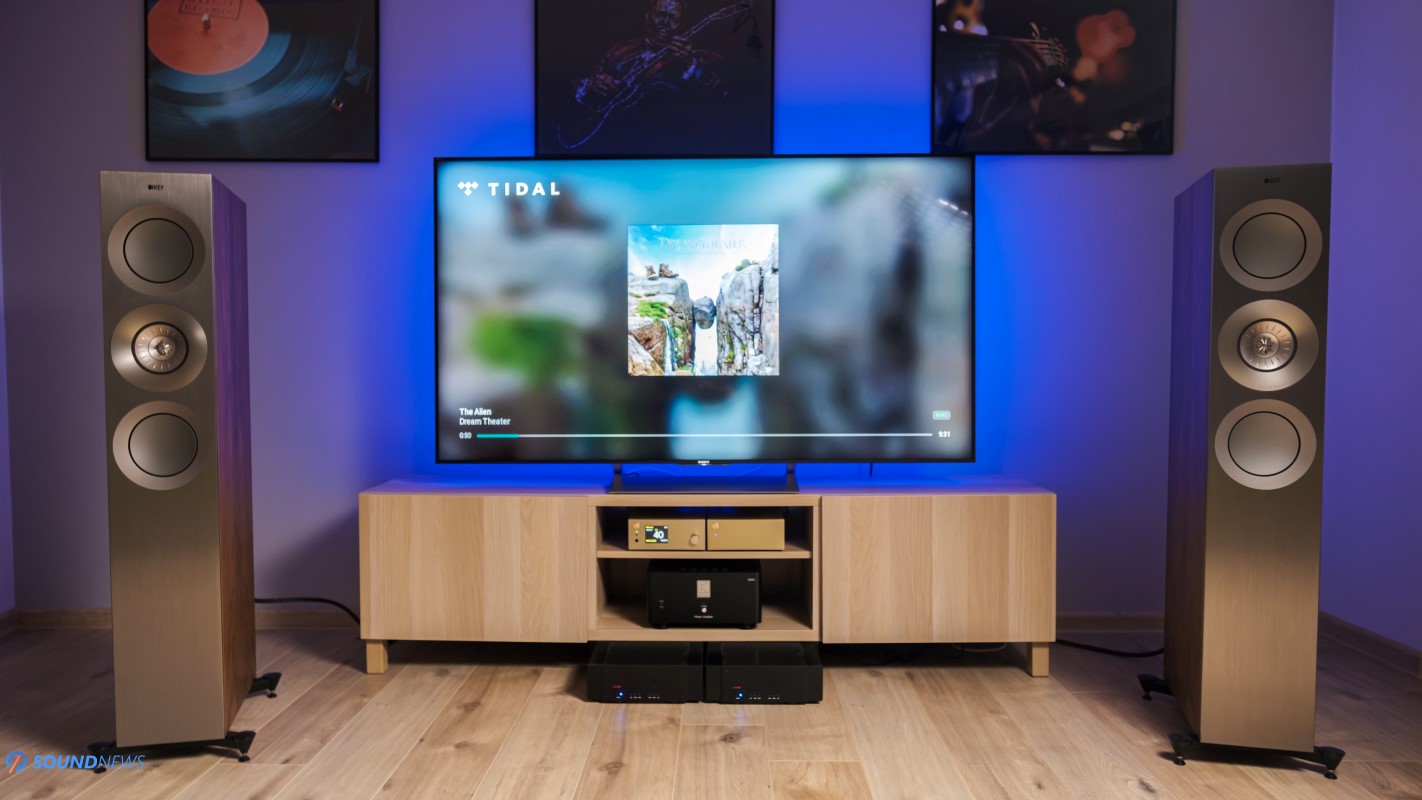
Build Quality & Looks
Alright folks, I’ll start with the boring part and then I’ll move to sound performance, splitting that info in eight detailed chapters. If you’re here for sound impressions only, then please skip to chapter one.
KEF refreshed the Reference line somewhere in 2014, bringing new technologies and advanced materials that didn’t exist previously, massively extending their performance to fully exploit the potential of contemporary music and movie formats.
According to KEF, the Reference line is the physical embodiment of KEF’s Total System Design philosophy. Every component is optimized both within itself and as part of the whole, while every drive unit is given the chance to perform to the best of its considerable ability. The result is a loudspeaker that performs far beyond the sum of its parts.
KEF crafts most of their stuff in Asia, but their flagship series as Blade, Reference and Muon are all hand assembled locally in Kent, UK, exactly in the same building that was previously inhabited by Kent Engineering & Foundry, from which they’ve got their famous name. Since the company’s establishment, KEF has maintained a flair for unusual and controversial speaker engineering, design and material use. KEF has always driven innovation in sound with examples including its iconic Muon and Blade speakers.
As of right now, there are five Reference designs: a three-way bookshelf speaker, two formidable three-way floorstanders, a three-way center channel and a powerful 1000W twin-driver subwoofer, which utilizes KEF’s ingenious force-cancelling technology. This configuration allows both drive units to operate more effectively, giving noticeably greater definition to low frequency effects.
The new Reference cabinets come in a choice of Silver Satin Walnut, Copper Black Aluminum and Blue Ice White veneers. Their cabinets are expertly engineered to determine the ideal shape and bracing geometry and their structure minimizes both resonances from the cabinet walls and the effects of standing waves. With constrained layer damping techniques and massive internal bracing, the enclosures are virtually inert.
If you look much closer to their front baffle, you can actually spot two aluminum plates sandwiched together, making the whole enclosure strong and rigid, completely nulling vibrations coming from their drivers. KEF ensures that Reference line cannot generate resonances of their own. They are fitted with spikes that provide stability for their heavy-duty enclosure. Their platinum-plated brass speaker terminals provide single and bi-wiring options. Without their feet, Reference 3 weighs some serious 51.3 kilos per piece (113 pounds) and as you can imagine, I needed two additional men helping me out with unboxing and then setting them up. These are by far, the heaviest loudspeakers that I’ve had in the living room, but their weight is serving an important purpose. They wanted to make their cabinet free of resonance, taking the advantage of reaction cancelling and that is precisely why their cabinets are made out of thick MDF boards for their walls and braces, adding massively to their weight.
Last, but not least, Reference 3 are plain and simple beautiful from any angle you look at them. While it’s the same veneer and the same aluminum baffle that you can find in a lot of loudspeakers of today…there is a strong high-end flair once you approach them closely. These are hand-made and you can feel that immediately once you start inspecting them. I think that all the pictures (including mine) that you can find online don’t do them proper justice. I’ve tried hard, but I couldn’t find design flaws, quibbles or imperfections, as Reference 3 are looking exactly how a proper Hi-Fi loudspeaker should look: like modern and beautiful furniture.
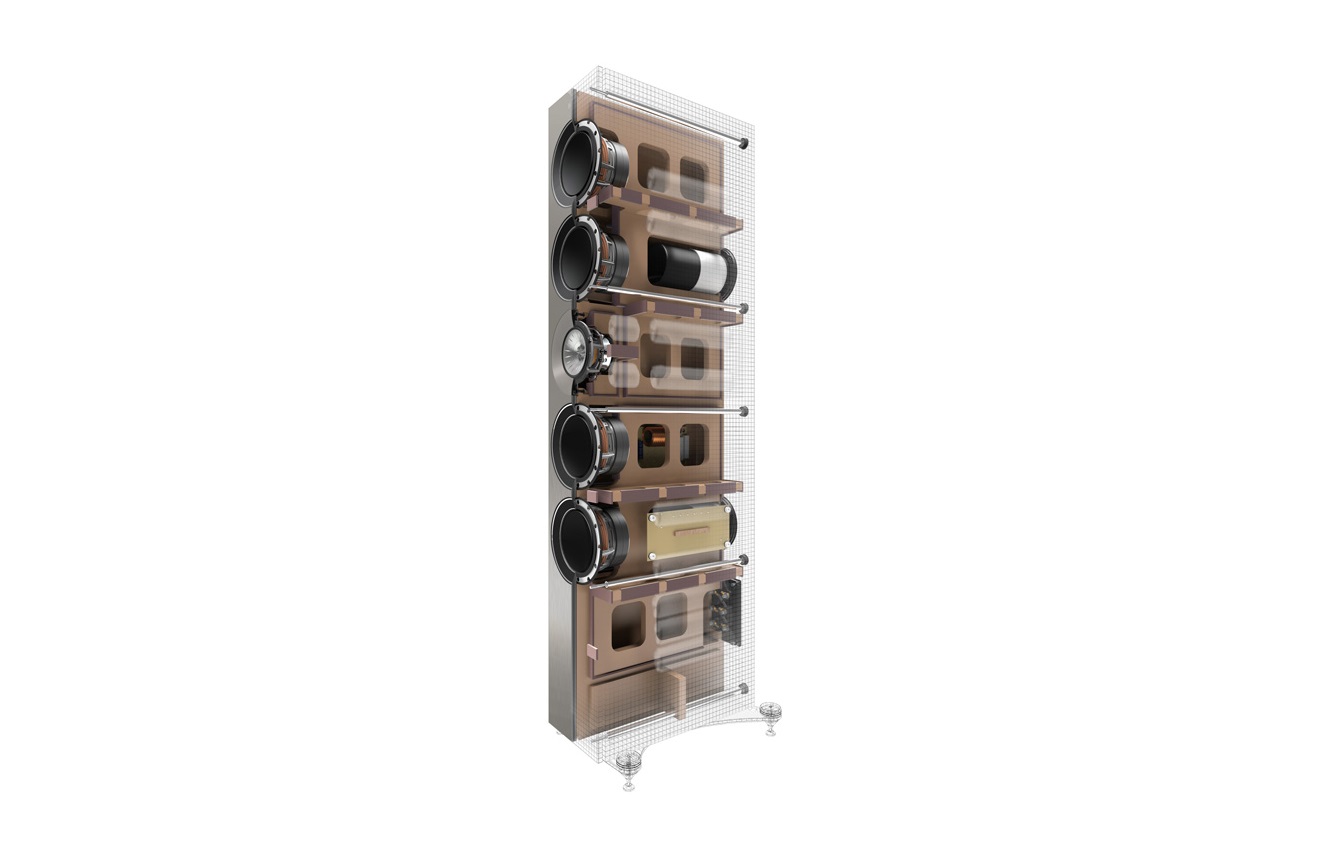
Technology Inside Reference 3
If you look closely there is something very distinctive with all KEF loudspeakers, starting with their most affordable ones and finishing with their best creations, usually it stays exactly in the middle of their cabinet, it’s rounded and protected from the outside world. I’m about their UNI-Q driver array that is currently at its 11th generation with the Reference line. As its name states, it’s a unique 25mm vented aluminum dome tweeter that was placed at the center of a highly sophisticated 125mm midrange driver. Both act as a single source that floods the listening space evenly with a flawless, natural soundfield, no matter where you sit. The vented tweeter combines a powerful motor system with a unique computer-optimized two-part aluminum dome so rigid that it operates pistonically over its entire working range. Its response has no trace of resonance or interference, and the sensitivity is much higher in the critical 2 kHz region than a conventional tweeter.
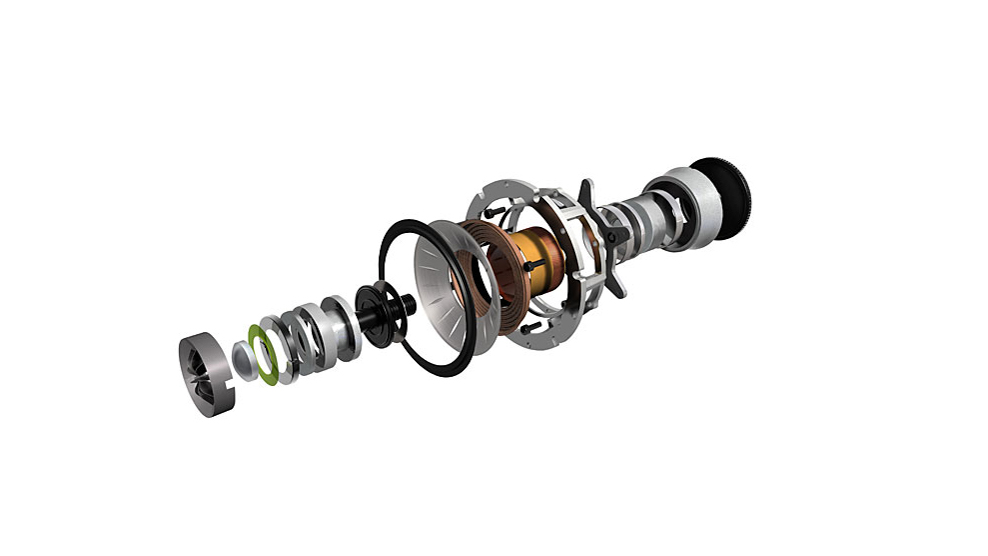
Obviously, not all UNI-Q drivers are made the same. For the example the one found in their LS50 Meta needs to deal with the whole frequency response, whereas the one found in the Reference line deals only with the midrange and treble regions, being helped by one or several metallic woofers. What you are looking at is a huge midrange cone that uses a unique tangerine waveguide, naming it that way as when they were crafting it, a member of their team said that it looked like peeled tangerine pieces glued together. That midrange tangerine cone was firstly revealed with their Concept Blade that ultimately inspired the original Blade, that was released in 2011. That cone works as a waveguide and dispersion not only for the midrange region, but also for the whole treble range. In traditional loudspeaker design you have distinct points from where midrange and treble energy radiates, hurting the directivity of the waveguides in the process. KEF completely bypassed that issue with their UNI-Q arrays, as if everything comes towards the listener from a single inception point. They no longer need a complicated crossover that messes with the final outcome, as you have only two sources of sound radiation that can be seen as another substantial improvement. With traditional loudspeakers, sound waves can add up constructively, they can interfere with each other, adding distortion or nulling parts of the frequency response, but all that becomes a non-issue with KEF’s UNI-Q driver arrays.
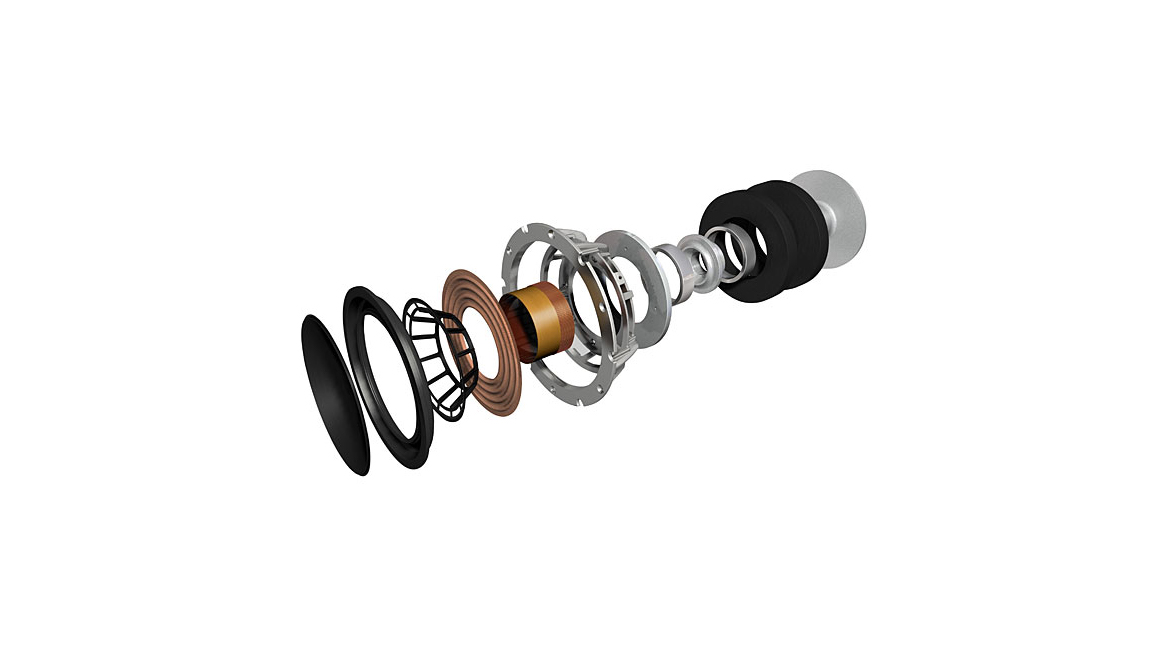
Reference line is also being helped by a few aluminum woofers. The new 165mm (6.5”) bass drivers are designed to perfectly complement KEF’s latest Uni-Q point source array. With a massive vented magnet assembly and a large aluminum-wire voice coil driving an exceptionally light, stiff and strong aluminum cone, improves dynamics and crucial power handling. Reference 3 has two woofers per loudspeaker, mounted on their front baffle. If you look closely, they have shallower aluminum drivers, allowing for a better diaphragm control, flowing freely in the air. Apart from that, each woofer is accompanied by a bass port to their rear. That’s right! Each Reference 3 has two bass ports that are adding a lot of oomph, punch in the chest and rumble down low. In the package you can find shorter bass ports that are limiting the low-end delivery by a little, making it tighter and clearer sounding in untreated rooms. By default, Reference 3 are equipped with long ports, that are improving their low-end delivery. You can change them according to your preference and room acoustics. You can even mix them together having the best of both worlds. If you have hard floors, but still want to feel a good punch in the chest, without adding too much distortion into the mix, I suggest going with long ports on top and short ports below. You’ll thank me later. Alright everybody, I’m ready for some well-deserved music so let’s hit some eardrums!
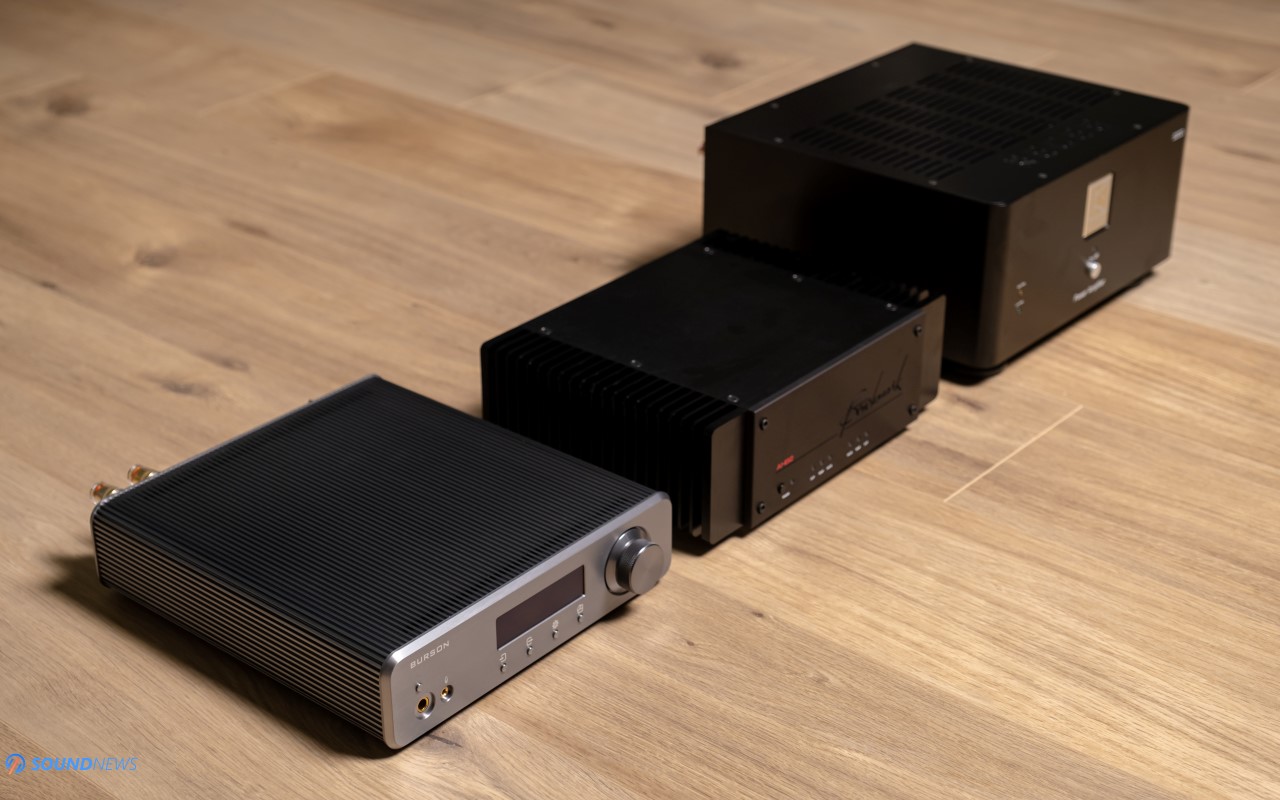
Test Equipment
It isn’t a secret to anyone that I have a strong fetish when it comes to digital sources. Some of them are small and affordable, some have great preamp stages, some are blessed with a streamer and I wanted to know if those would be good, great or plain bad with Reference 3. From small units like SMSL SU-9N, D1SE and Topping D90SE, to more serious ones like Matrix Audio Element X, Audiobyte’s HydraVox and then to do-it-all units like Gold Note DS-10 PLUS driven by PSU-10 EVO, Reference 3 were tested with all that and then some.
As for power…I’ve tried around 15 integrated and power amplifiers with them, starting with entry-level Class-D amplifiers (SMSL DA-8S, DA-9S), then trying a few medium sized integrated amplifiers (KECES E40, Cambridge Audio Azur 851A, SMSL SA400), then some nicer units including several power amplifiers (KECES S125, Naim Unity Atom) and then finishing with huge Class A/AB amplifiers (Kinki Studio EX-M7, KECES S300, Benchmark AHB2). When it comes to preamp duties, I was using a Benchmark HPA4 or a Musician Monoceros, depending on the source. There was a particular combo that squeezed the last drop of performance out of these, look for all that in chapter two. Alright everybody, I’m ready for some well-deserved music so let’s hit some eardrums!
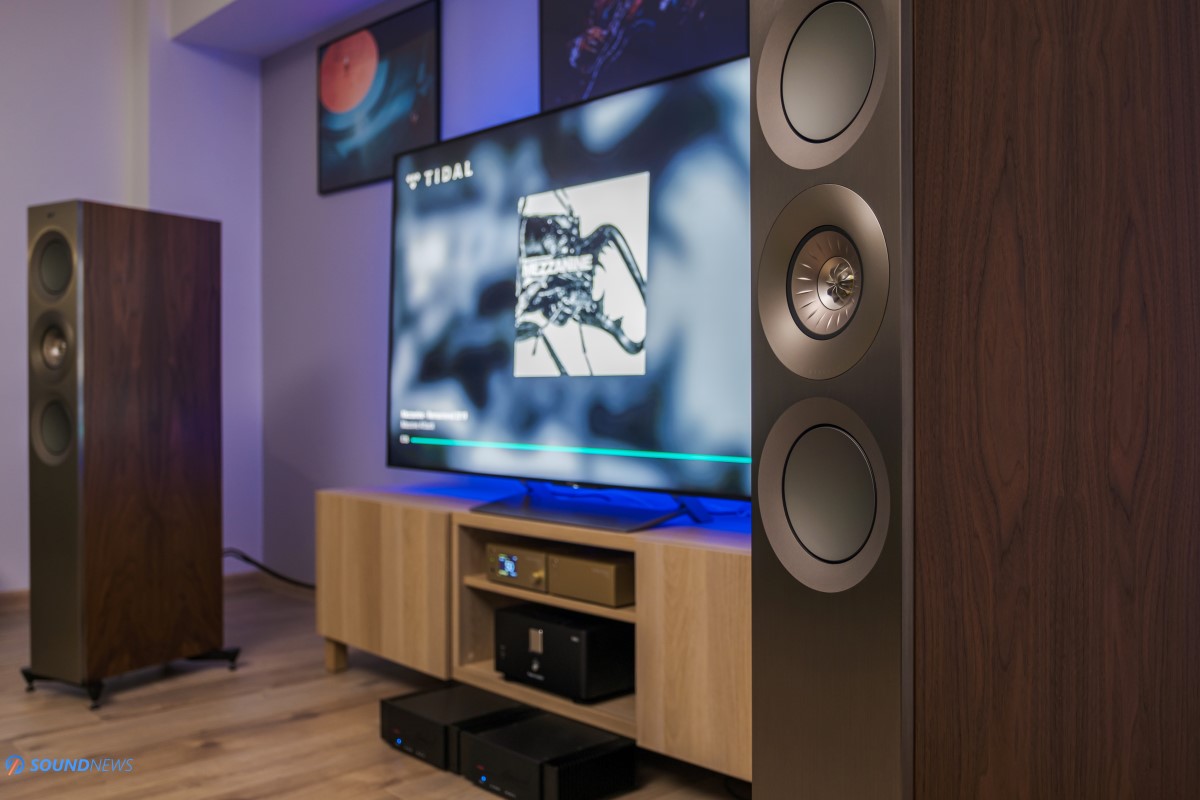
Sound Performance
I. Sound Signature
A lot of people are associating the KEF house sound with a highly detailed, super technical sound, that is driven by perfect measurements, but lacking when it comes to awaking emotions. When I am reading all that online, it makes me sad, as Reference line is nothing like that. Before I’ll tell you exactly how they sounded at my place, please keep in mind that I’m using some of the most linear and transparent sounding DACs (Matrix Audio Element X), an achromatic and dead-flat preamplifier (Benchmark HPA4) and two equally neutral and colorless power amplifiers (Benchmark AHB2). Even with a highly detailed and invisible system like that, Reference 3 sounded like pure, unaltered music, firing positive energy from a single inception point, carrying all the warmth, air and nuances that a top-class loudspeaker should have by default. There was a point in my life when I believed that high-end audio is a marketing gimmick, so that audio companies could milk wealthy people that care about the looks and less so about the music itself…but I was all wrong.
With Reference 3, forget about frequency response or about the smaller things, as with them I have an urge of getting a glass of wine, lie down on the couch, turn the light off, turn the music on, so they would turn me on, inject some dopamine and put me into a very different state of mind. With Reference 3, it’s not about hearing music anymore, it’s about feeling it with your entire body. As you all know, I am quite crazy about transients; I dislike slow sounding drivers and I simply cannot stand when bass notes are overlapping on top of each other. With their metallic woofers I can feel the bass going down low in a lightning-fast manner, never lingering for a micro-second longer, feeling it with my entire body like I am being punched in the chest over and over again. While I wouldn’t call them smooth or elevated in the midrange, they didn’t sound fake at all, voices were real sounding to me, decaying naturally, string-based instruments sounded incredibly alive and organic, without spilling over the lower-treble region.
Reference 3 are incredibly impactful and hard punching, feed them the right amount of power and prepare yourself for a body massage. For the first time, in my living room, I’ve heard exactly what I am hearing from a top-of-the-line headphone setup: an extended frequency response top to bottom, without raising or dropping a particular frequency range. Everything was shining brightly, without moving the spotlights on a particular region in the FR.
Last but not least, those time-aligned drivers were portraying a clear and defined image, sounding spacious and decompressed, easily filling every corner of the room with sweet music. We have an open space of around 35 square meters (~377 square foot) that combines the living room with a kitchen and when I’m cooking (on rare occasions) some 7 meters away from the speakers, I am getting the same energy from them. They still sound highly engaging, never breaking up even when I’m going higher on the volume wheel. With traditional loudspeakers, there is a certain volume after which they’ll start distorting, but with Reference 3 I could go louder and they would still sound cohesive and tightly controlled, completely bypassing distortions for good.
When I’m closing my eyes, I am being hit by a wall of sound that feels rich with details and full-bodied, moving a substantial amount of air in an instant and portraying a clear and vivid picture in front of me. While Reference 3 are fully covering the frequency response, even starting with sub-bass (if you’re using long-ports), they were never clinical, cold or soulless sounding to me. Long story short, these are among the most natural sounding loudspeakers that I’ve tried at my place, that fully satisfied my transient response fetish. Of course, there are plenty of great sounding loudspeakers out there, but the ones I’ve owned in the past were gently pressing the brakes, never being on time with impactful tunes, messing the timing and cascading a few notes on top of each other.
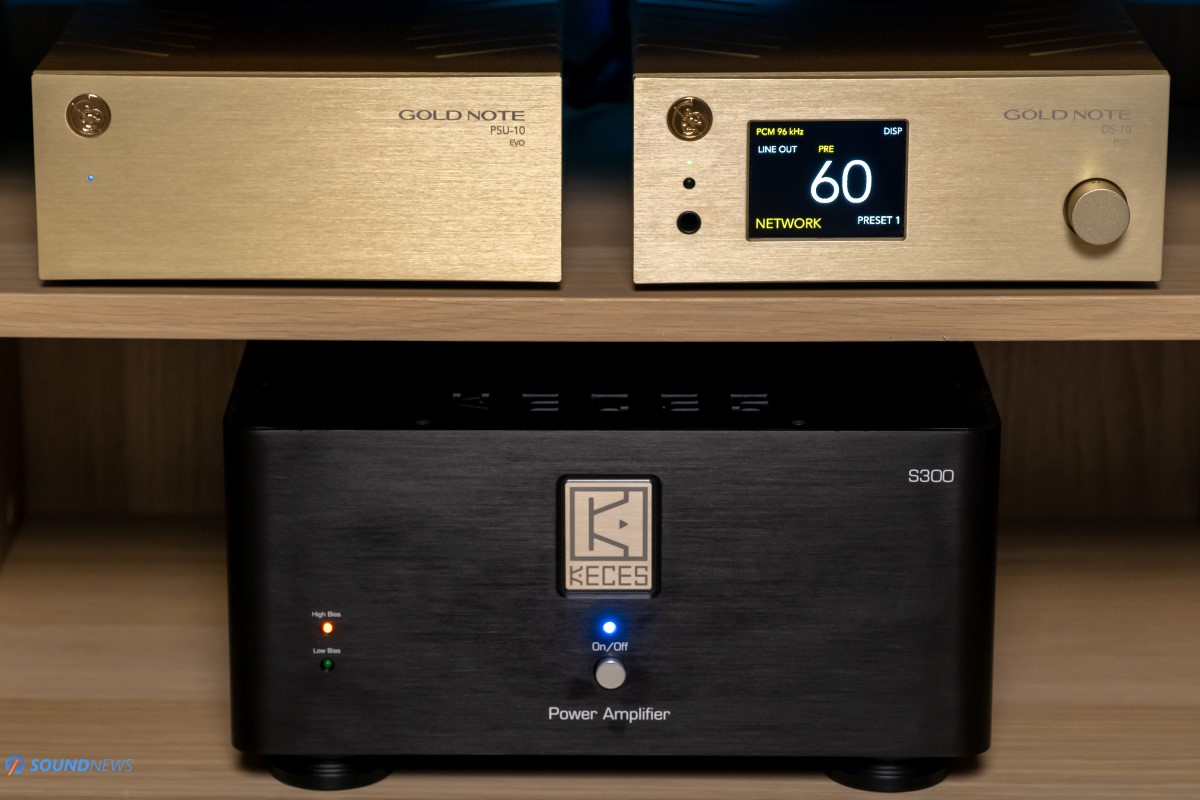
II. System Matching & Burn-In
I remember getting them for Christmas, putting them together and feeling accomplished, as if something magical happened. That is because I never owned something like this before, being happy that my dream of owning a reference setup came to fruition. Two friends helped me with the unboxing and setting the whole setup and when I powered them on for the first time, I remember being disappointed a little, as they sounded considerably better in the showroom a few days prior. You see, metallic drivers like these are extremely stiff and rigid and it is normal experiencing a less impressive, less engaging and impactful sound at first, as they didn’t loosen up their drivers yet. With conventional paper drivers and silk tweeters, a few days later they would be sounding at their maximum potential. I can’t say exactly how much time my Reference 3 needed to sound at their best, but two weeks later everything just clicked into place and they started sounding as I remember them in the showroom. There was a bigger difference before and after burn-in compared to my former loudspeakers and that difference was major and immediate.
While the fine gents of KEF will tell you that these are using some highly efficient drivers…just remember that we are dealing with strong and rigid drivers, that wouldn’t move as easily. With a sensitivity of 87 dB and with an impedance of 8 Ohms…these demanded more power to any other loudspeakers that I had before.
Around here, everybody knows that I am a huge DAC lover, no wonder people are calling me The DACMan and weirdly enough I started liking that nickname. It was natural trying a bunch of D/A converters and Reference 3 actually helped me a lot when I was evaluating such devices.
What struck me first is that these highly detailed and transparent sounding loudspeakers were sounding less impressive, bi-dimensional and almost flat, carrying little to no emotions with entry to mid-level converters. Digital creatures that had dedicated line-amplifier circuits sounded considerably better to those that used over-simplified digital attenuation techniques. For example…I wasn’t very impressed by entry level Topping, SMSL and Gustard DACs that were almost clinical sounding when I was pairing them with power amplifiers. After adding a preamplifier in the chain like Musician Monoceros or Benchmark HPA4, I felt their presence immediately, improving the pace, rhythm and timing and boosting dynamics to higher levels. When I’ve used several D/A converters that had proper line-amplifier circuits, things improved drastically. No wonder Gold Note DS-10 Plus powered by its complimentary PSU-10 EVO power supply, together with the Matrix Audio Element X sounded the best to me, completely bypassing the need of a dedicated preamplifier.
When it comes to power, I would personally stay away from entry-level class D amplifiers, like SMSL DA-8S or DA-9. I’ve returned back the DA-9, without posting an article about it, as it was heavily clipping with the Reference 3 from a certain volume upwards. Higher powered Class-D units like SMSL SA400 sounded way better, awakening higher dynamics, better controlling their drivers and lifting a single layer of veil that was present with lower tiered units. SA400 was a good match and I was surprised by the final outcome, but it wasn’t squeezing the last drop of performance, far from that. If you are hunting for some ultimate class-D amplifiers, take a look at Hypex NC1200-based amplifiers or at anything made by Devialet.
A month later after getting the speakers, I’ve tried them with a monstrous Kinki Studio EX-M7 power amplifier that injected so much fun in the bass and a lot of midrange presence, that I could easily live with that unit alone, never having an urge to upgrade. Pumping 225 Watts of power into 8 Ohms, it was such a natural sounding unit and one of the heaviest punching amplifiers I’ve tried…at the cost of being less impressive when it comes to detail-retrieval and ultimate transparency. When I’ve traded it with a different power amplifier (KECES S300), I’ve exchanged a few watts in favor of a clearer sound, that let me focus much easier on anything in the recording. For me, that was a good trade, as their technicalities plunged higher, immersing myself deeper into my music and for about six months, S300 became my daily driver power amplifier and you can actually see it in a lot of source and loudspeaker reviews around here. A true eye-opener was that Burson Timekeeper 3i, that in my case worked as a DAC, Preamp and power amplifier, all placed inside a small and elegant box. Delivering just 100 Watts per channel, but always working in Class-AB, I was amazed by its natural timbre and highly engaging nature, always pressing the acceleration to the floor when modern music would appear on my playlist. Reference 3 sounded as if I was powering them with a dedicated DAC, Preamp and power amplifier, but I didn’t like that little to no headroom was remaining on tap with older jazz and blues.
Someone suggested trying a Benchmark AHB2 power amplifier if I wanted the last drop of performance in terms of speed, impact and detail retrieval. Curiosity won me over and while a single AHB2 was clipping at higher volumes with some particular tracks, I remained mesmerized by how much cleaner and transparent it sounded compared to any other amplifier that I had before. It was completely disappearing from my acoustic chain, leaving my music completely untouched. Later on, I found out that two AHB2 could be used in bridged mode, quadrupling their power output from 100 Watts (in stereo mode) to 380Watts in mono mode. In a blink of an eye, two AHB2 were driving the Reference 3 like I’ve never heard them before. At this very moment, I can say with confidence that I’ve squeezed the last drop of performance out of them…I never heard them as impactful, as thumpy, as mean and as speedy sounding. A few months later I’ve acquired the second AHB2 and don’t think I will be exchanging them anytime soon. Highly Recommended!
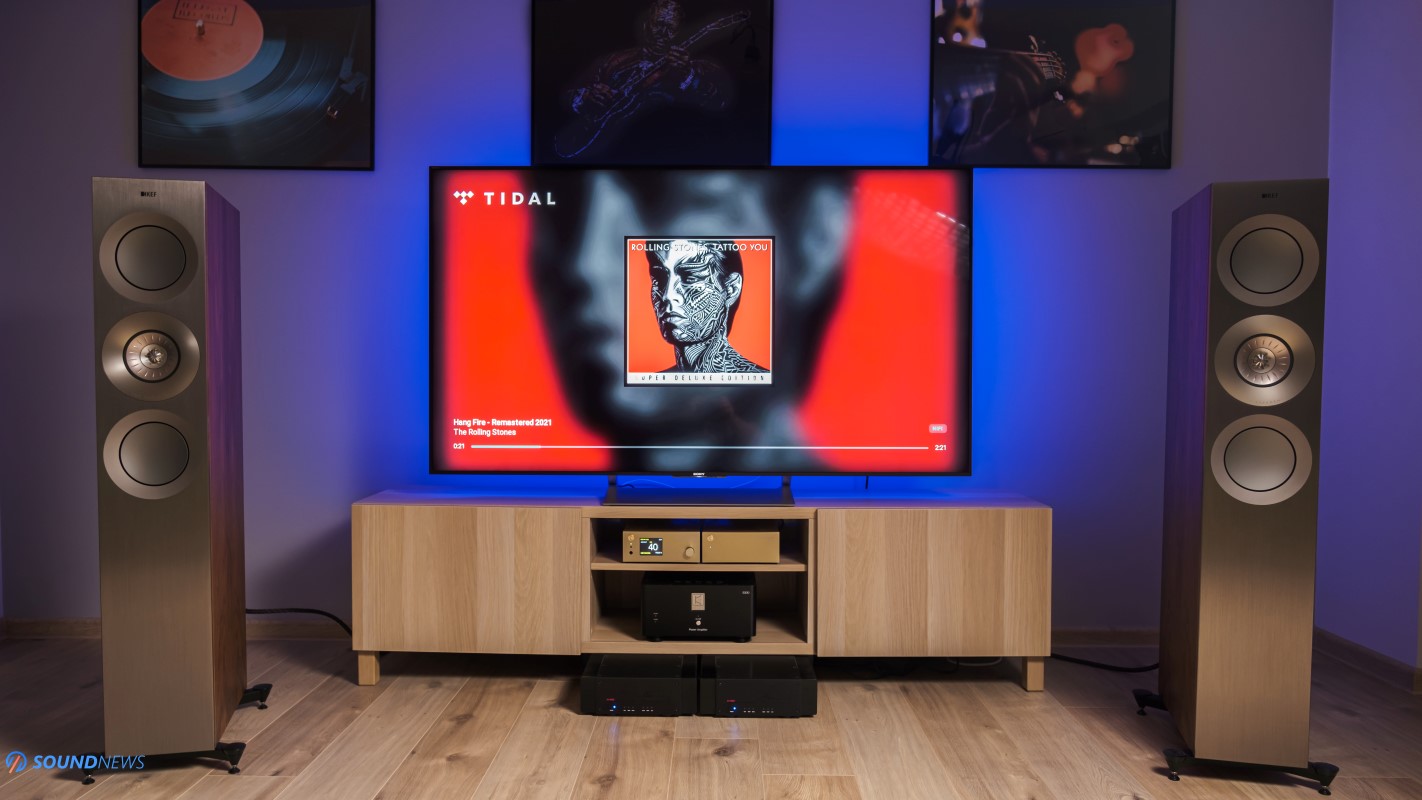
III. Transient Response
With two AHB2 mono amps in place…brace yourself while listening to modern pop, rock or electronica, as they wouldn’t be gentle or nice to you. When properly driven, they will go fast, keeping up with anything your playlist has to offer, forget about long and boring decays, as these are going in and out in split seconds. These are dancing in the ring like Vasyl Lomachenko and are punching like Tyson Fury and when a bass note lands, you’ll feel it with your entire body. These are sending tremors at higher volumes and are demanding a nicer acoustic treatment for the best results. I know, don’t remind me…somebody will be measuring my listening room for a custom acoustic treatment and that will happen around Christmas time. It seems that KEF solved the biggest shortcomings of their lower tiered speakers, as finally there is weight in the bass, there is definition and so much energy down low and all that worked as magic with modern music. The bass itself was spectacular from any point of view, it was reaching the lowest octaves, it was clean and detailed, preserving a nice layering, it was full of substance and it was visceral sounding all the time. Reference 3 were easily sorting out all my amplifiers, working like a polygraph test, showing their exact character and exposing their sound signature.
Suddenly some of those amplifiers became mellow, others relaxed, linear, impactful or simply outstanding from any point of view. With several bookshelves, I couldn’t differentiate them as easily, but Reference 3 responded immediately to all that power that was passing through them. In my case Class-A and AB amplifiers worked the best, adding a hint of midrange presence, a machine gun like speed and a thunderous slam and impact.
While listening to the latest album by Iron Maiden – Senjutsu (Qobuz / Tidal) you can feel its dark and less than perfect production. Kevin Shirley was good on the latest Dream Theater album, but here a mediocre production was delivered at best. While this is a mid-paced album, leaning towards progressive and atmospheric metal, Reference 3 still raised some hair on my arms and horns on my palm, sending my right foot into a toe-tapping fiesta. Dickinson molded his vocal lines in such a way, that he would rarely reach higher registers and that’s perfectly fine, considering his age. While, he’s not in his prime anymore, he is still a powerful force and you can feel that when lower registers are being reached. Stratego tries to reinvigorate the whole album with up-tempo moments, sending shivers through my spine while mercifully punching my chest. Very few loudspeakers can render rock and metal the way I like it, but Reference 3 are simply made for music like this, rocking my boat and infusing plenty of positive energy for the rest of the day. This album is slowing down towards the end, building an atmospheric, almost eerie feeling. This is still a Maiden’s album for Odin’s sake and the end result is a solid heavy album with atmospheric and progressive ideas placed carefully around, performed by an experienced crew, but never delivering inspiring compositions. After sucking a lot of energy due to a lackluster production quality, we’re left with a decent heavy album that was almost cured by the Reference 3.
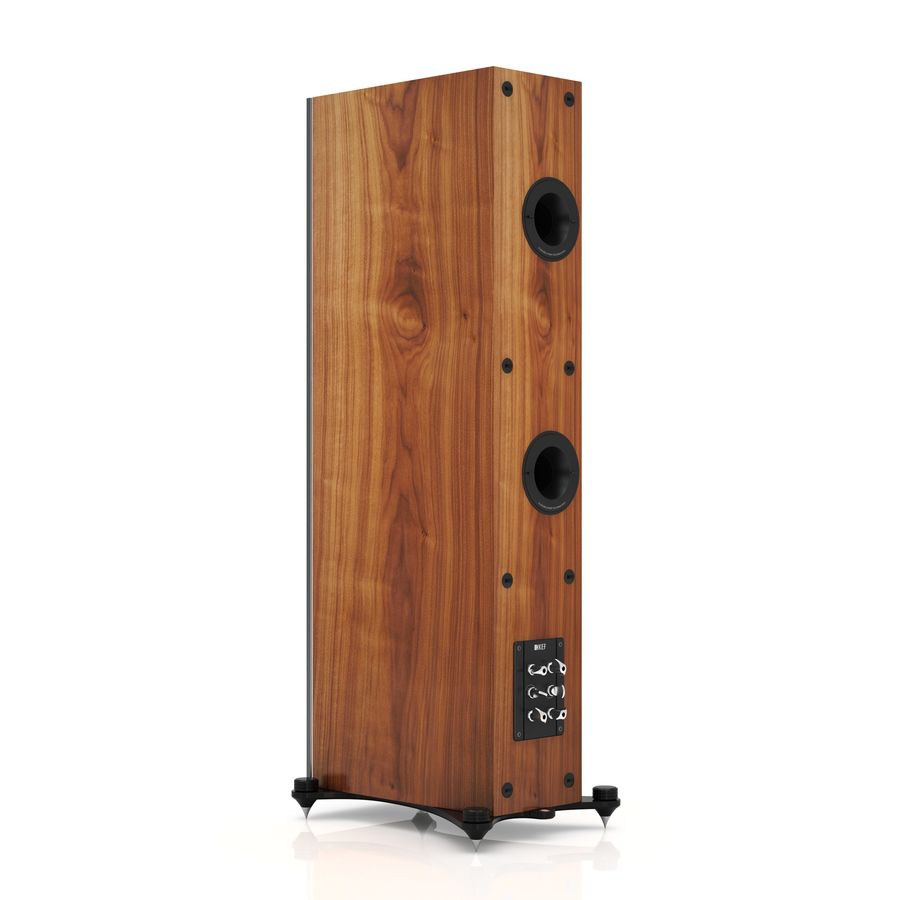
IV. Soundstage & Depth
I remember chasing for bigger drivers in my loudspeakers for my entire life now, when I had them at 4.5”, I wanted them at 5”, then I’ve dreamt for 7” woofers and then I moved to stand-floor speakers so I can have multiple drivers, better filling my room with sounds, improving the low-end delivery and the chest-pounding impact. There is no other way in saying that Reference 3 are big and bold sounding, putting a lot of meat on the bone, filling my room with sounds even at much lower SPL, something that my past loudspeakers couldn’t do. Sometimes, I listen to my rock and electronica tunes at lower volumes and I would still be enveloped by sounds, feeling the air travel in the room, all delivered in a precise moment in time, not too early and never too late. In terms of dynamics and transients there was a huge difference when more more was passing through them, but when it came to scale and openness, Reference 3 sounded big and airy with any of them. Sure, some were portraying a bi-dimensional sound with little to no depth, others added more layers of music, but in terms of sheer scale, they all sounded the same.
These are sounding so big, that I believe they need a bigger room to unleash their fullest potential. There wasn’t a track that didn’t sound open, effortless and easy going on them. Sounds were coming from different angles, some even hitting me from behind my back, creating a weird feeling that additional speakers hidden somewhere in the room, never delivering a frontal-sound only, but more like a 3D experience, especially when live recordings came out to play.
A few days ago, a re-mixed version of Let It Be by The Beatles (Qobuz / Tidal) was released on major streaming platforms and I decided going through it several times to have a better feel of its production value. You can find the Super Deluxe version on several streaming platforms, but Qobuz will be delivering the best (24-bit 96kHz lossless) version, which sounded mighty impressive from the get go. Two Of Us and Let It Be are some of the tracks that I’m listening on the monthly basis and never I have believed that all the background noise of older recordings can be magically removed in the digital domain, but I guess…miracles can happen. Everybody knows that Let it Be is far from their best work, but this re-issue sounds absolutely fun-tastic, removing all the grain, hiss and noise, while adding some air in between the notes, so it could sound fresh and new again and that was immediately picked by the detailed nature of Reference 3.
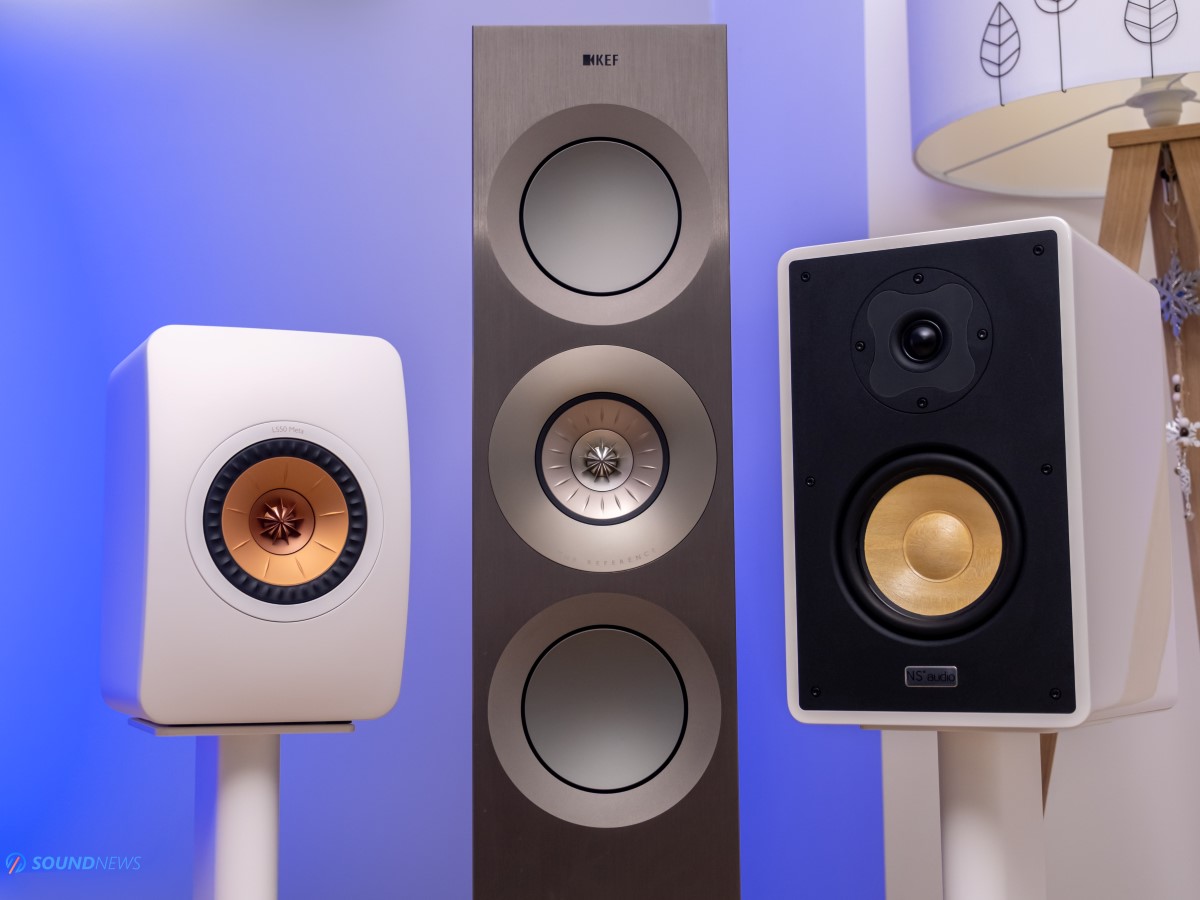
V. Detail Retrieval
When I’m listening to brand new albums of some of my favorite bands, I would always move to my living room, engage my stereo setup, close my eyes, open my mind and let the energy flow. My former loudspeakers were quite impressive in several key areas, but when reviewing top-class digital sources, I was forced to use a high-end headphone setup that would reveal a little bit more. With Reference 3, I no longer need to do that, as they are providing as much micro-details and as much information as there could ever be in those tracks. These are sniffing out all the mastering errors, the smallest intensity sounds are also brought to the surface and I wouldn’t expect anything else out of some metallic woofers and tweeters. Reference 3 are detail-oriented loudspeakers at their core, focusing not only on the macro-scale, but on every tiny detail that is hiding in your tracks, without becoming clinical or thin sounding in the long run. I could listen to them all day long out of a highly transparent and dead-neutral setup and I would never get tired from that. If you like hearing some chit-chat on live recordings, people inhaling and exhaling air, musicians touching their instruments, vocal cords vibrating in a life-like manner and all the stuff that is buried deep, then Reference 3 will show that to you pretty easily. If you’re wondering about the quality of you source and amplifier, these will be exposing their nature and the biggest bottlenecks of your setup. I could go on and on about their clean, transparent and detailed presentation and I will be always saying the same words, because these are my truth tellers, always giving me 100%, without applying a beatifying filter on top. While they are working as music making machines in the evening, all day long I use them as an invaluable tool when doing source and amp reviews.
What was highly unusual compared to other loudspeakers that were tested around here is that I could go much higher to my usual listening levels and they wouldn’t distort. They sounded tightly controlled and clean, devoid of muddiness at higher volumes, something that I couldn’t say about other units that were tested around here. On the opposite pole, on much lower volumes, these weren’t losing dynamics, sounding as impressive and engaging as they did at my usual listening volume. All the low-intensity notes and all the murmuring happening down low was felt even in between 50 to 60 dB, which was quite unusual. I guess their size and massive weight gave them a helping hand, keeping at bay all the nasty gremlins and distortion, while sounding charming and clean.

Frequency Response
VI. Bass
I have complained about the low-end not being enough with bookshelf loudspeakers many times now, with several exceptions that used passive radiators on their backs, partially improving their bass extension. Having said that, it’s a completely different story when massive standfloors are coming to play in the living room, that use big woofers and several bass-reflex ports on their backs. Reference 3 can be considered as mid-sized standfloor speakers, especially when you put them side by side near a Reference 5, but even at that size they were delivering a chest pounding impact, with bass notes reaching as low as 30 Hz on some particular tracks. I like fast executed bass lines, I like when those are going deep, being sustained and decayed naturally. I like when it’s a detailed type of bass, so I can feel it pulsating, delivering layers after layers of bass. These weren’t that impressive on class-D amplifiers, but when S300 and two Benchmark AHB2 came to play, Reference 3 started firing those bass notes like a machine gun, controlling them with an iron grip and never breaking up at higher volumes. When I’m getting new transducers to play with, I tend to drive them past my comfortable listening levels. If all I can hear is an undistorted type of bass, then the hardest test was already passed. I’ve tested plenty of fabulous sounding loudspeakers around here…when it comes to bass definition, punch and cleanness, Reference 3 are taking the iron throne as the most impressive ones.
With music like Angel by Massive Attack (Qobuz / Tidal) starts playing, it’s no longer a simple act of music listening, it becomes an experience of senses. It’s unimaginable how a slower tempo and several melodic lines could be so powerful and gut-wrenching. It’s a wild adventure that added so much weight down low, slowly merging into an atmospheric, haunting and inspiring experience. This particular track will put most loudspeakers to shame, but not on Reference’s 3 watch, that went deep, delivered meaty bass notes, while controlling it fully and sending it in waves.
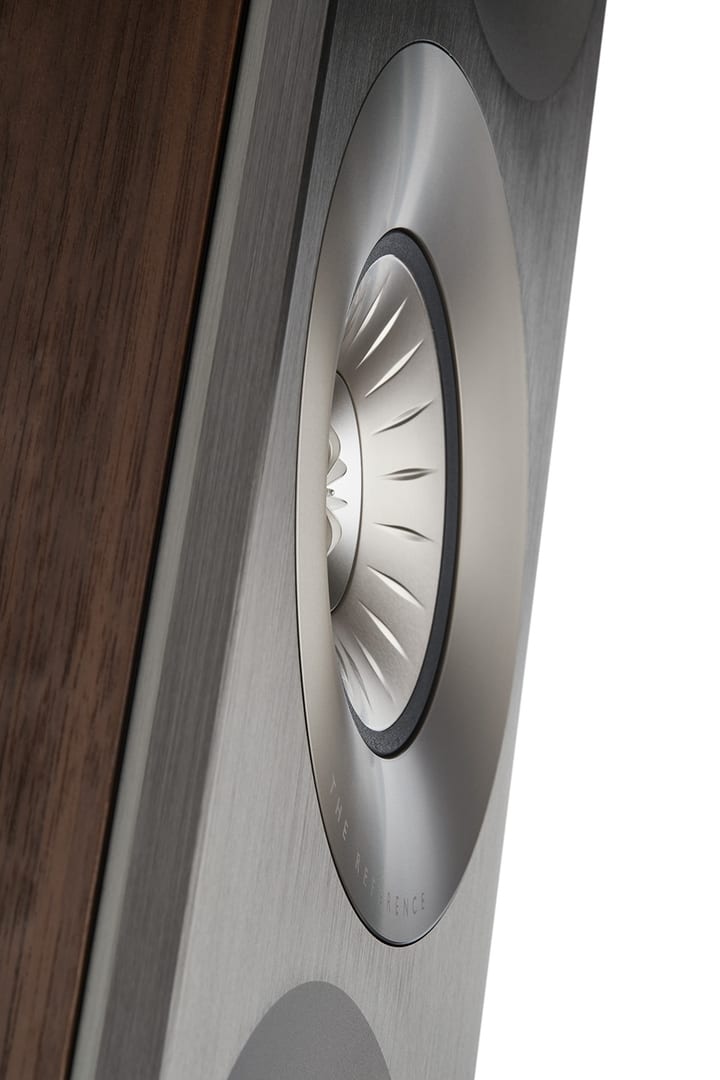
VII. Midrange
All KEF loudspeakers are choosing a neutral presentation and a technical sounding midrange, there is an unspoken rule that these shouldn’t be impressive in the midrange department and I wouldn’t expect anything else out of some aluminum woofers and tweeters. They don’t have a warm and soul-grabbing midrange – that is for sure, these aren’t boosting the midrange presence in any way, how most Danish and UK made speakers are doing, but they will never render it less impressive to the rest of the frequency response. I personally can’t blame a midrange that is straight as a line and present in my tunes only when it’s called for.
As their name suggests, KEF went with a reference tuning, without overdoing anything in the FR, trying to reveal as many micro-details as possible, while retaining an organic and life-like presentation. I wouldn’t describe them as meaty sounding, as these are choosing honesty and transparency above all, preserving the weight, the innards and the naturalness happening in this region. In my humble opinion, midrange comes in right doses, never being boosted to the stratosphere, nor being wiped out of existence. On the plus side, I never found them thin or lifeless sounding and there is nothing of that mellow and thin midrange of mid-level loudspeakers. Vocal performance is just spot on, I’m still getting goose bumps with female voices, throat singing of The HU still scares the life out of me and Leonard Cohen is still guttural and spooky real. All in all, Reference 3 are wild mustangs, easily keeping up with sporty tunes, sounding right from the get go and never adding a beatifying filter all over your music.
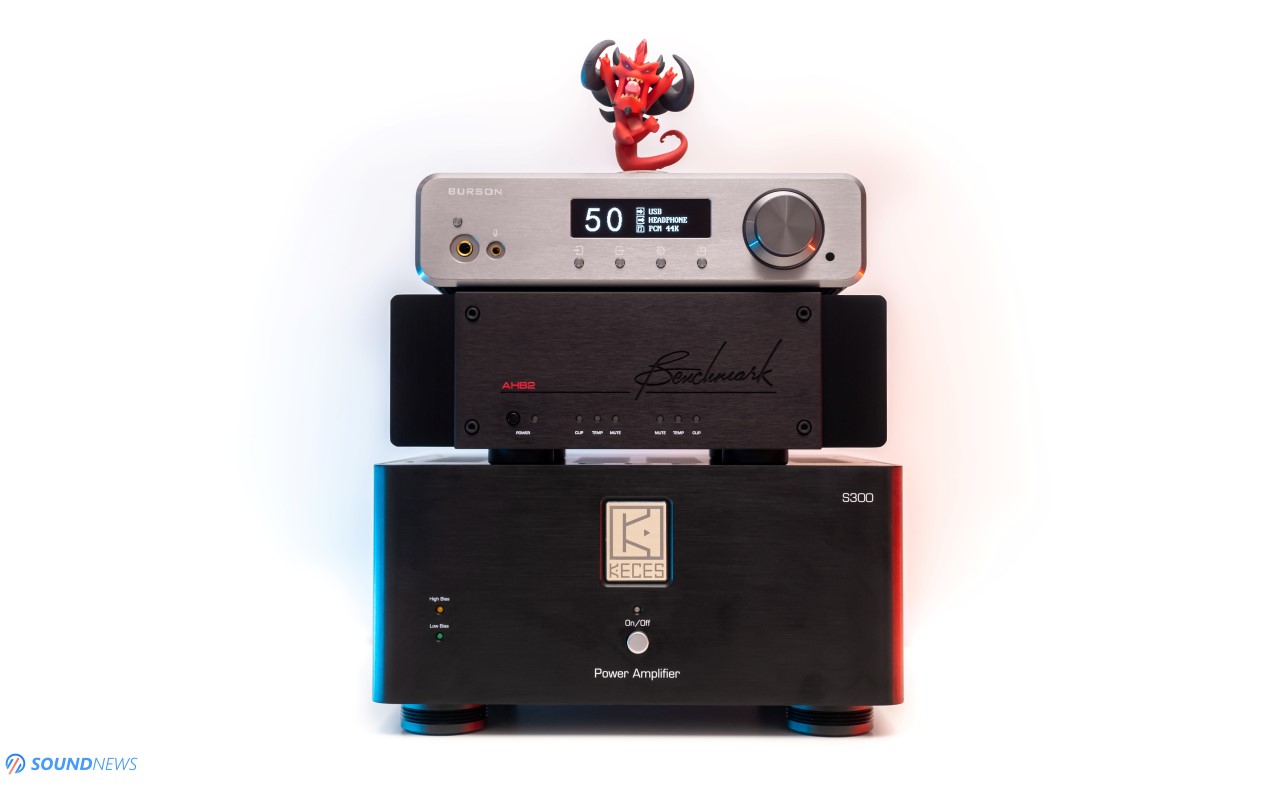
VIII. Treble
The Reference line is known to sound identical to the source material, without adding color or monotony into the mix. Their stiff drivers made them clean and highly detailed, so they would cover a wider frequency response top to bottom. Their treble performance is simply…sublime! You can feel the full force behind big-drums, cymbal crashes and snare drum hits. You feel that energy unaltered, unspoiled and close to the real thing. I’ve drummed a little in my university years and I could never forget the ringing of Zildjian hi-hats and blast bells, nor the thump of proper bass drums. With Reference 3, I’m looking at a younger version of myself, as these are providing a defined treble, without becoming clinical or bright sounding. I felt the shimmering when cymbals were being hit, bells were ringing loud and clear, without wanting to lower the volume of my music. There is an abundance of energy in the treble, there is micro-detail even past top-octave, but all that comes without sacrificing anything. You can listen to your rock and metal tunes at higher volumes, without experiencing ear-ringing and listening fatigue
Do note that I’m using a dead-neutral setup and still, these we never tiring in long listening sessions. They offered an extended treble performance and if you consider yourself a treble-head, then they will be providing plenty of energy up top, without rolling it early on.
Benchmark HPA4, AHB2 and Reference 3 are detail-oriented units, these are my truth tellers and if something is not quite on the same level, they will be exposing the weaker link in a few seconds. I didn’t experience brightness with that setup, I just wanted to listen to a lot more rock, blues and jazz and rediscover my childhood albums. Reference 3 were running in circles around some other loudspeakers I had for review, as they provided more of everything.
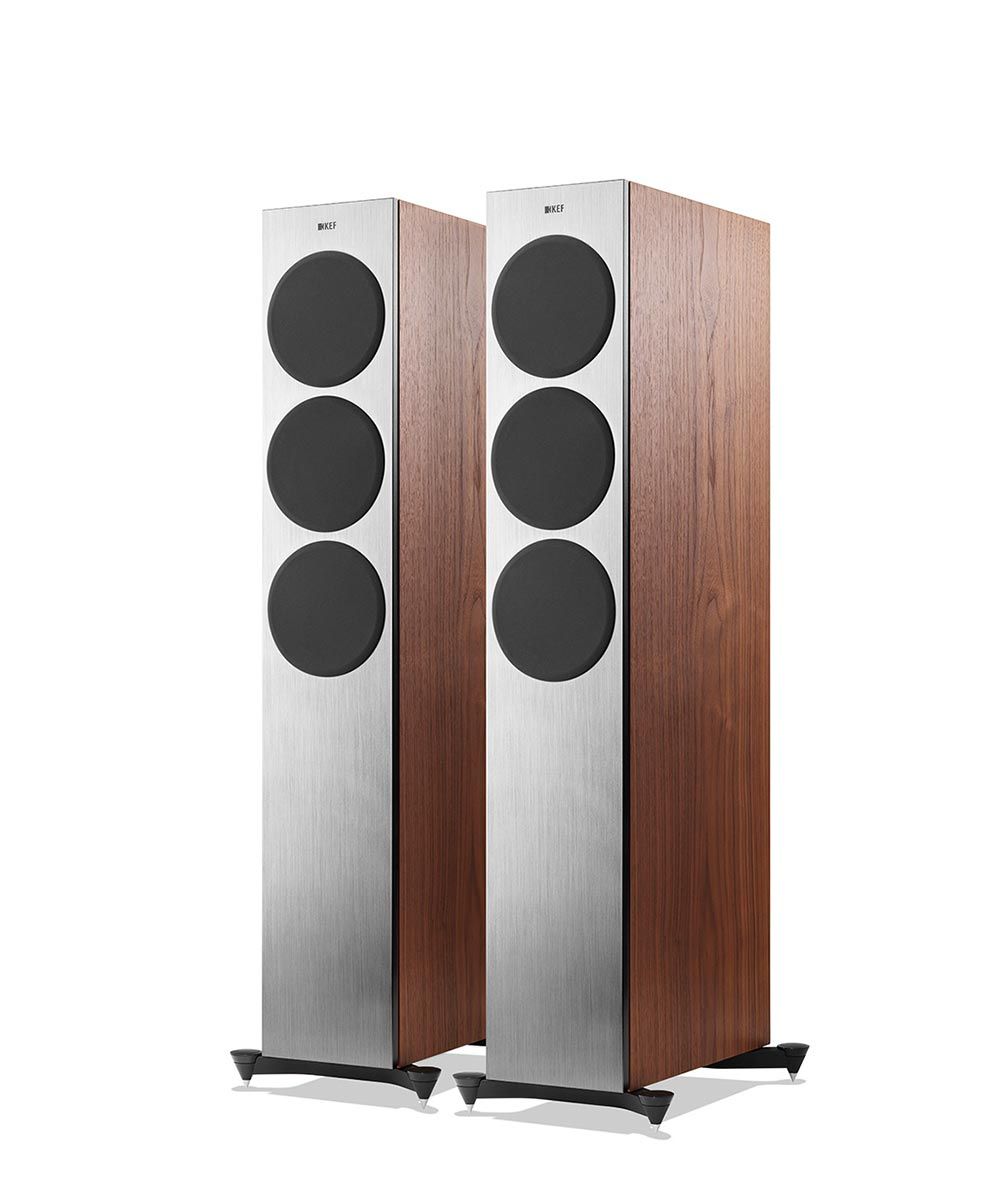
My Conclusion
I remember the moment I got them as if it was yesterday, having four amplifiers on the floor, mating them with different sources, so I could find a perfect match. With them, I’ve learned a lot in the process and I started appreciating top-class electronics even more. These are simply the best sounding loudspeakers that I’ve owned and although they’re soulless and cold to the touch, I’ve prepared them a warm place inside my heart and I hope I won’t have an urge to upgrade anytime soon.
Whilst KEF’s Reference 3 aren’t exactly affordable and easy to drive, I simply cannot imagine my life without them in my living room and if you are willing to start a similar adventure, please give them a try, you won’t be disappointed. I’ve invested a lot of time in finding the best source and amplifier that suits my needs and I don’t regret a single dime and minute I’ve spent on them. There is nothing I can complain about these loudspeakers and I don’t remember how many times they put goose bumps all over my body and that’s precisely why I am going to give them our highest Gold Award. They fully deserve it and I’m looking forward to KEF’s 60th Anniversary!

KEF Reference 3 will cost you 14.000 USD / 12.000 EUR / 10.500 GBP and you can get them from your local KEF distributor. I want to congratulate the AVstore.ro team that let me borrow a pair of Reference 1 and Reference 3 for a few days, guiding me along the way and helping me making a wise purchase decision. In case you are getting a pair, leave a comment below and let me know what sources and amplifiers worked best for you.
PROS:
- Timeless and modern looking, excellent fit & finish
- Massive and heavy weight
- A technologically advanced loudspeaker
- Once you feed them enough power, transient response becomes their second name. Extremely engaging and hard punching in the chest
- The deepest and most controlled low-end I’ve experienced thus far
- World class speed and acceleration
- Massive sounding! Easily filling the gaps with music, offering an impressive layering, imaging and depth
- Honest sounding & detail-oriented above anything else. These will be revealing the bottlenecks of your setup
- Covers the frequency response in full (including the sub-bass), without raising or dropping anything in particular
- Linear and neutral (in a good way), without sugar coating your music
- Highly refined and fun sounding
- Worth their asking price
CONS:
- Not that easy to drive
- Acoustic treatment becomes a necessity
- Pricey
ASSOCIATED EQUIPMENT:
- DACs: Audiobyte HydraVox & HydraZap, Musician Aquarius, Matrix Audio Element X, Gold Note DS-10 Plus & PSU-10 EVO, SMSL D1 SE, Topping D90 SE
- DAPs: FiiO M11 Plus LTD, M15, Shanling M8, M6 V.21
- Headphone Amps: Flux Lab Acoustics Volot, Benchmark HPA4, Burson Soloist 3X, Musician Andromeda, SMSL SP400, Gustard H16
- Preamps: Musician Monoceros, Benchmark HPA4, Topping PRE90
- Power Amplifiers: Benchmark AHB2 (x2), KECES S300, SMSL SA400, Burson Timekeeper 3i
- Integrated Amplifiers: KECES E40, Burson Timekeeper 3i
- Loudspeakers: KEF Reference 3, Sound of Eden Crescendo UNO, Natural Sound NS17
- IEMs: FiiO FA9, FH7, FH5S, FD7, Meze Rai Penta, Rai Solo, LittleDot Cu KIS, Hiby Crystal 6, IKKO OH10, Moondrop KATO & others
- Portable headphones: Sennheiser Momentum 2, Meze 99 Classics, Sony WH1000-XM4
- Full-sized headphones: Hifiman Susvara, HE1000SE, Arya, HE400SE, Audeze LCD-4, Erzetich Phobos 2021, Erzetich Mania, Kennerton Wodan, Magni, Gjallarhorn, Vali, M12S, Ollo S4X Reference, Apos Caspian, Sendy Peacock & Aiva
- Interconnects: QED Reference (x2), Topping TCX1 (x2)
- Speaker cables: Kimber PR8, Audioquest Type4
- Power Cables: Isotek EVO3 Premier (x3)
- Balanced Isolation Power Conditioners: PLiXiR Elite BAC1500 (stereo setup), Elite BAC400 (headphone setup)
